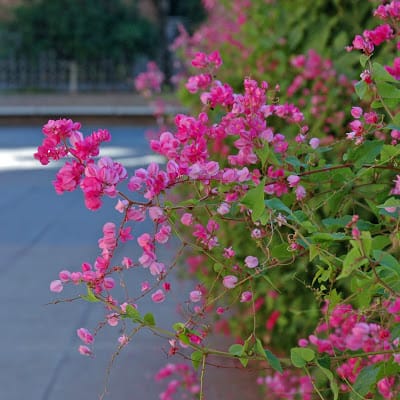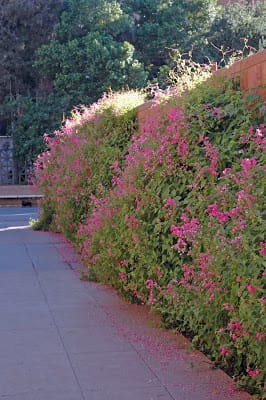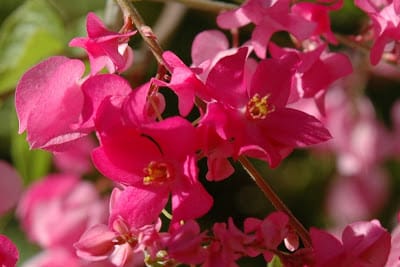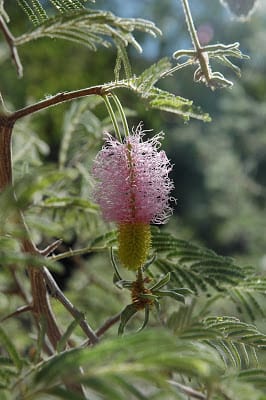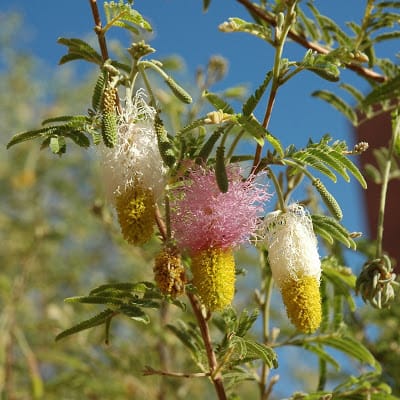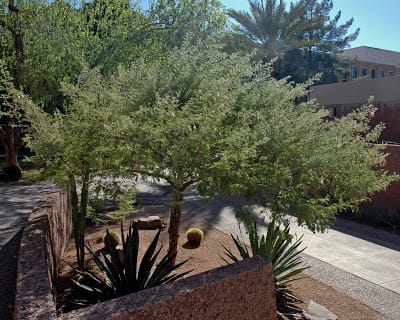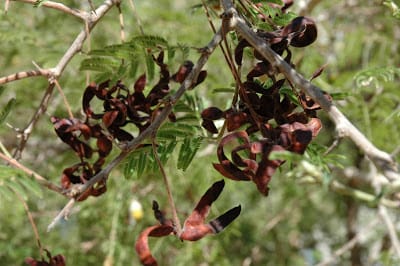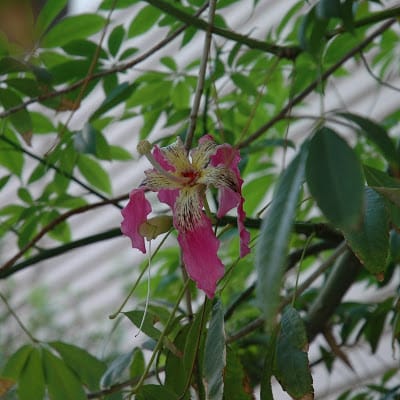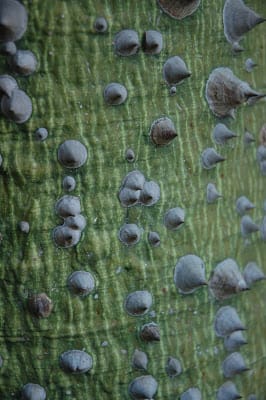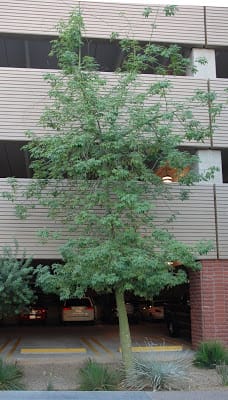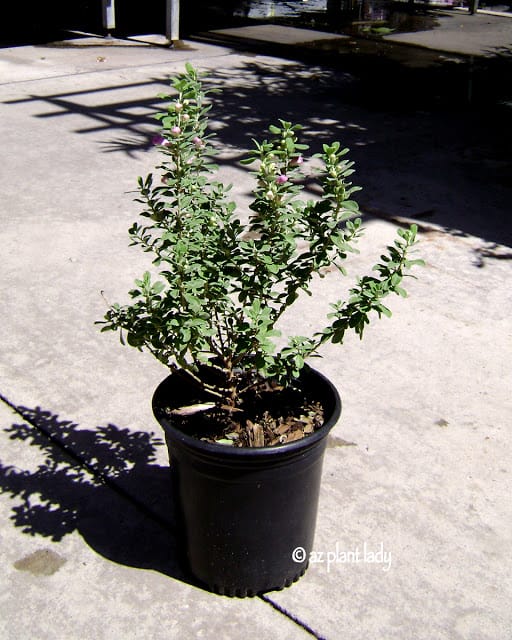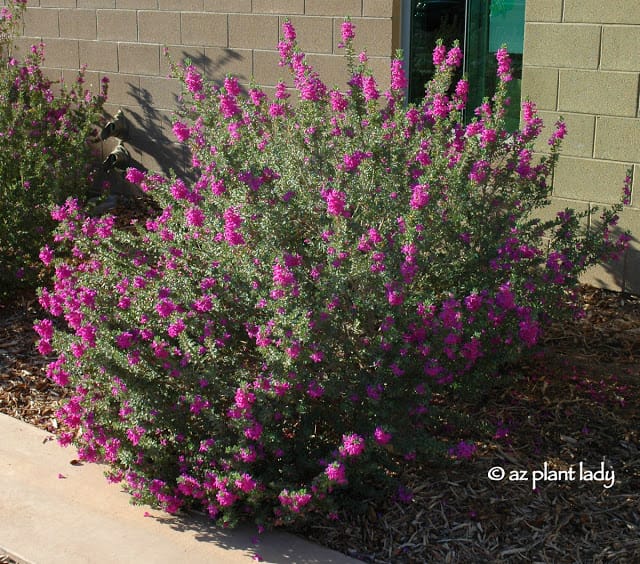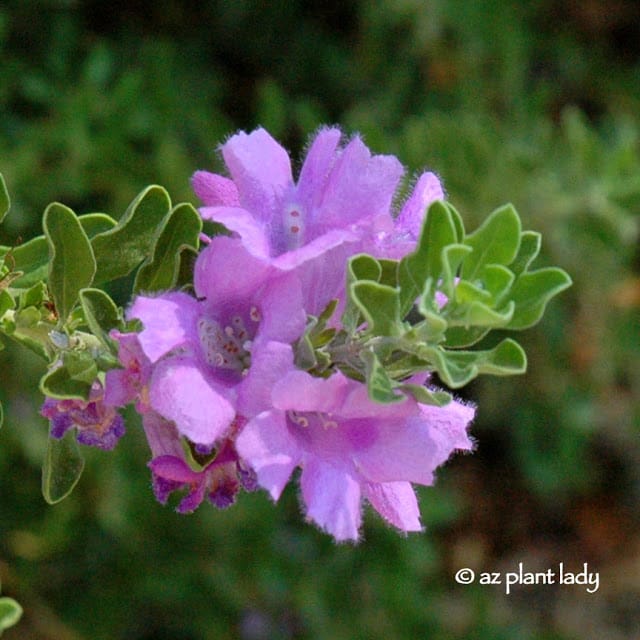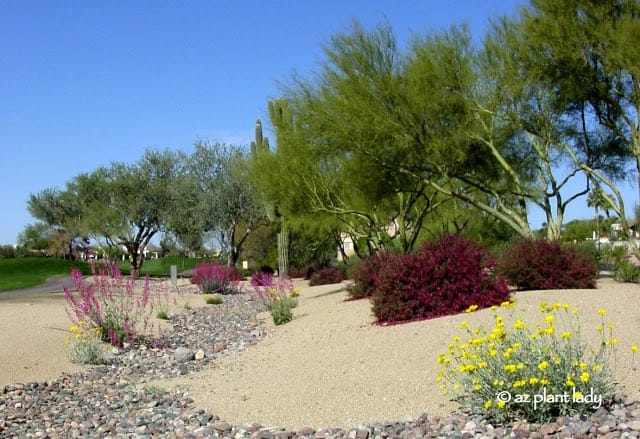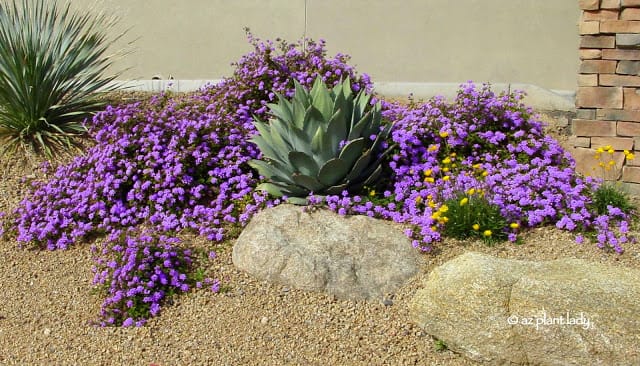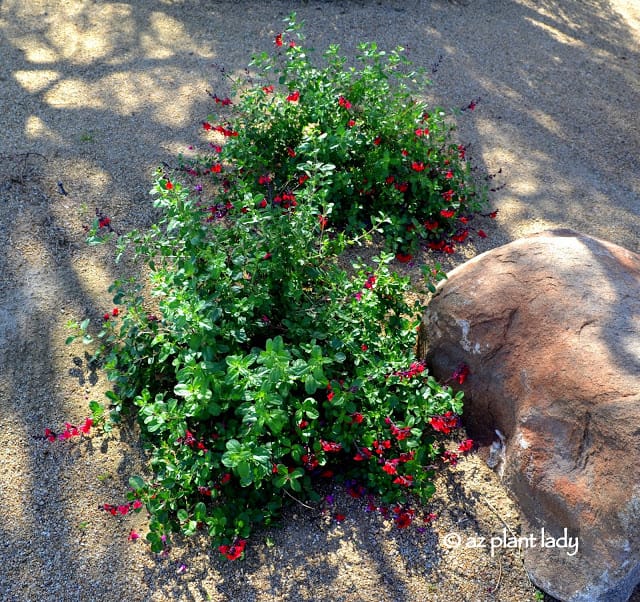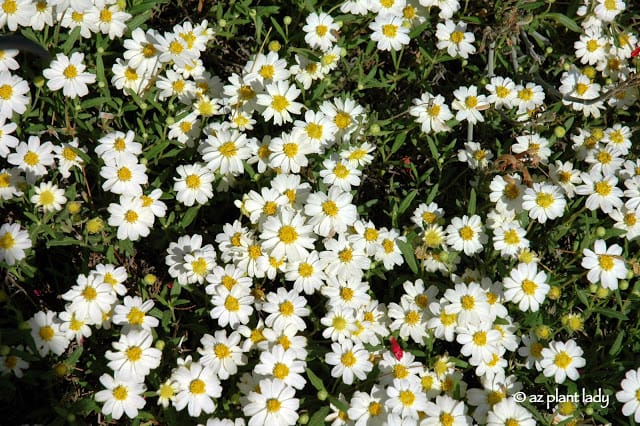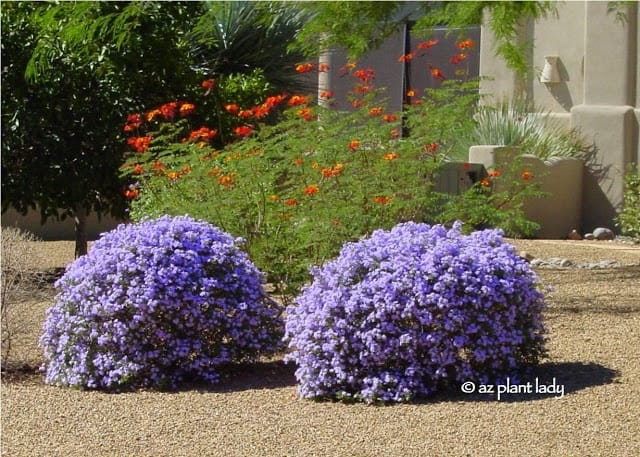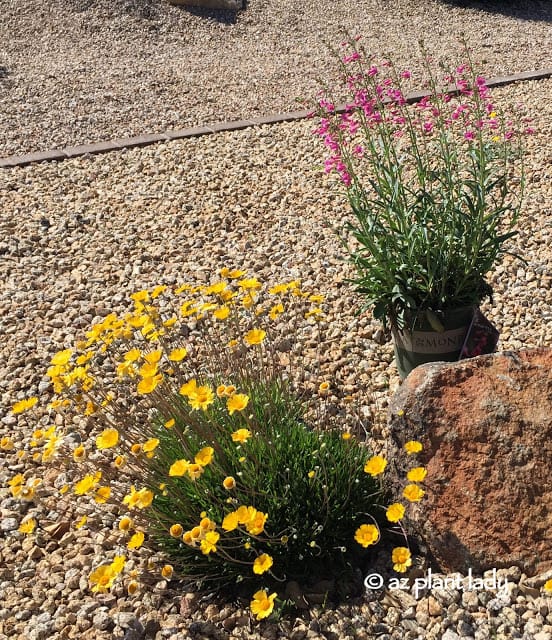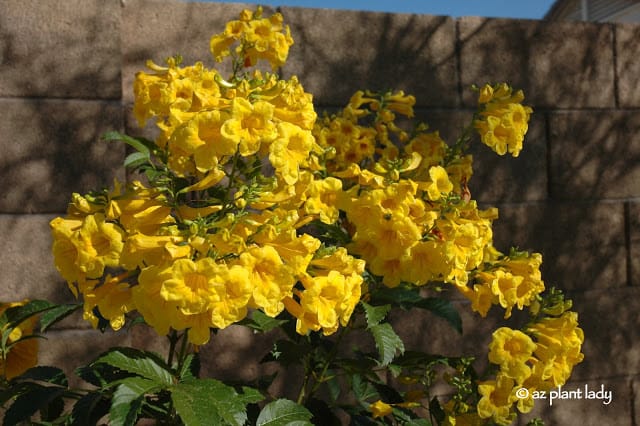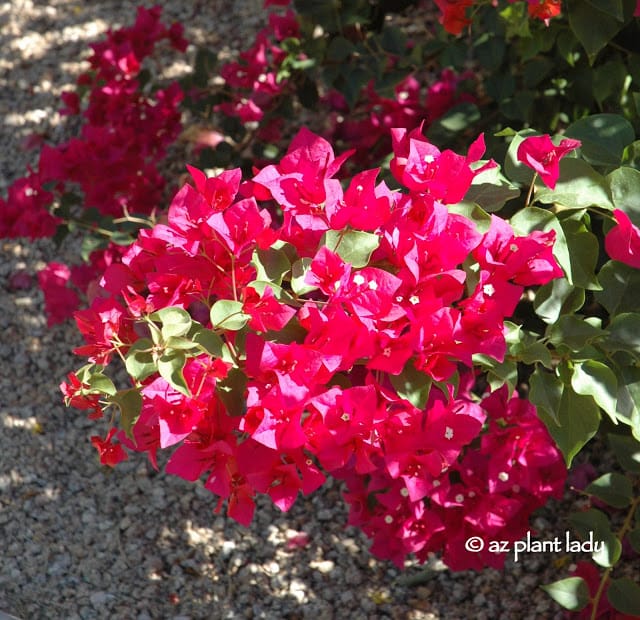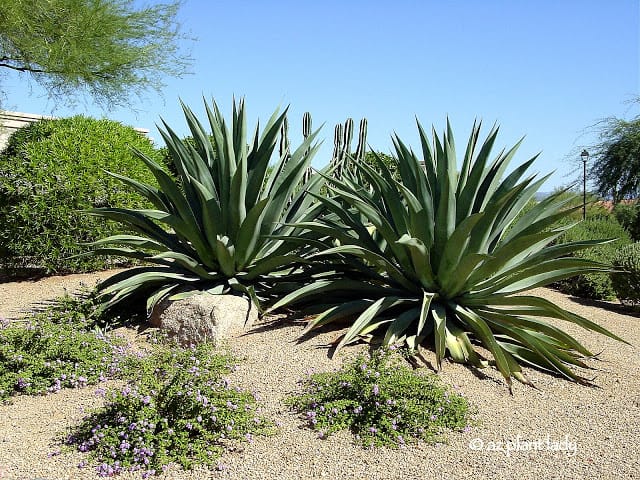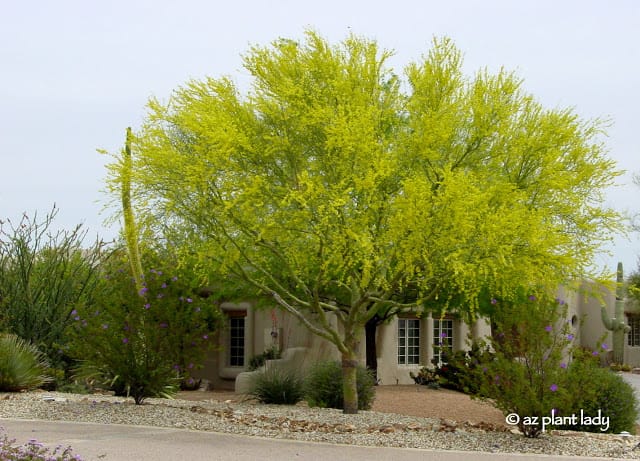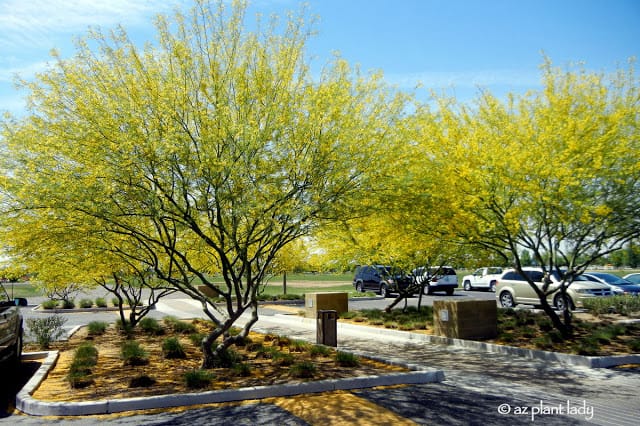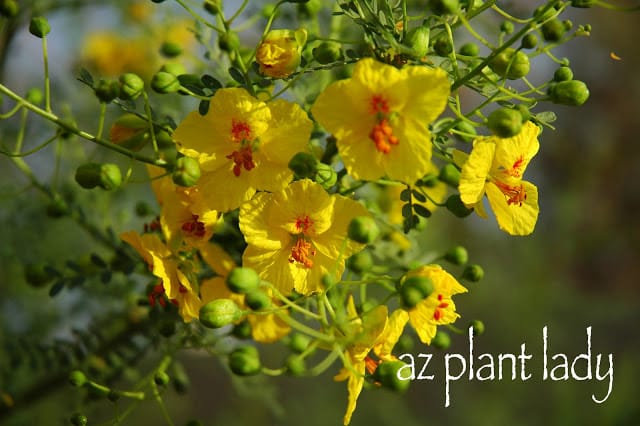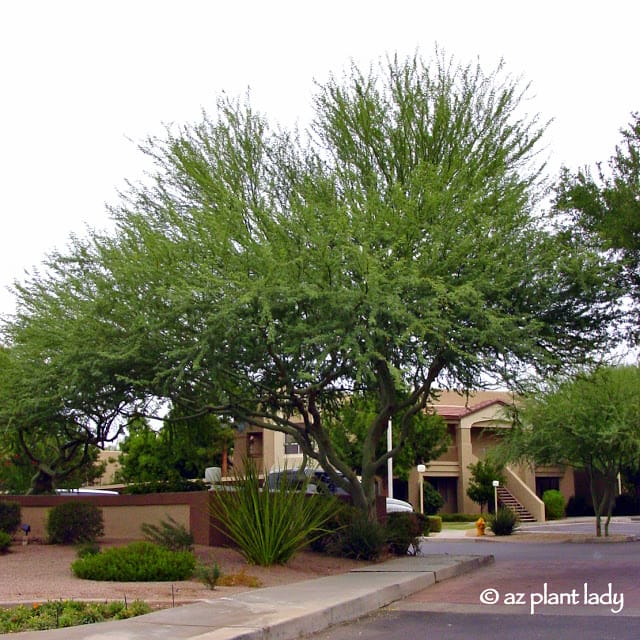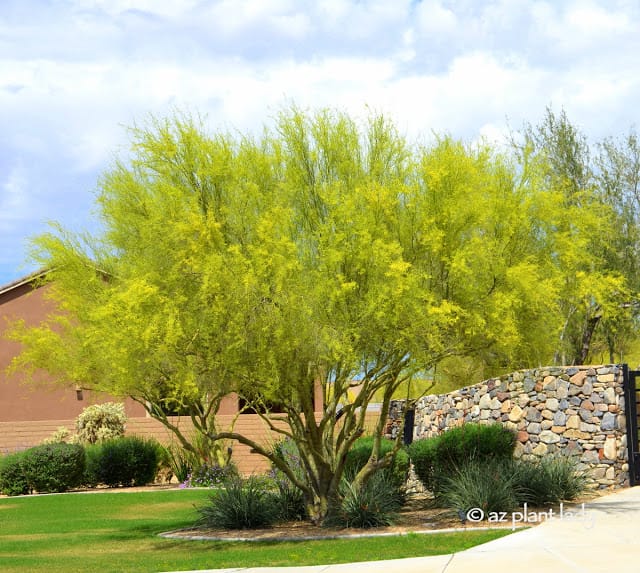Those who know me quickly learn that I love a bargain. I get so excited when I find something on sale. It gets even better when I have a coupon for the sale item. Finding a good bargain is in my DNA. I come from a long line of women who love to find great deals.
Well for me, this also extends to the landscape. Now, it may seem a contradiction when I state to my clients that they can save a lot of money by using large plants. We all know that large plants cost a lot of money at the nursery.
I quickly go on to explain to them that I DO NOT recommend buying large-sized plants at the nursery. In fact, I love finding shrubs in the 1-gallon size at the nursery. They are much cheaper, which pleases the bargain hunter in me. What I DO recommend is buying plants in small containers that will grow large fairly quickly.
For example, this 1-gallon Green Cloud Texas Sage cost about $5 dollars at the nursery.
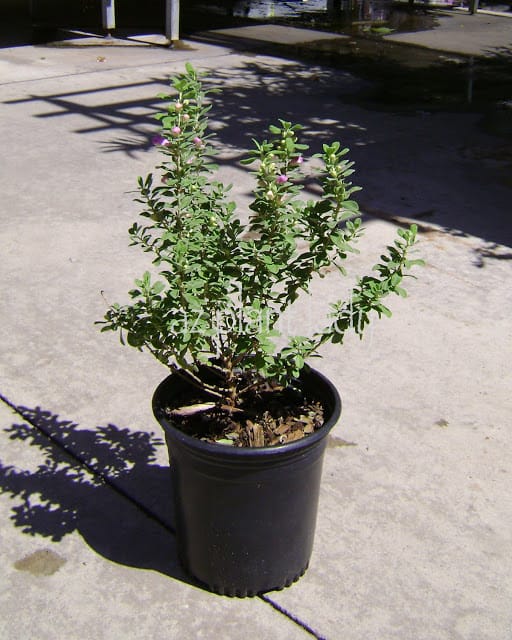
I admit, it is not very impressive and it is hard to imagine what it will look like when it grows up. But, this is a fast growing shrub and in just 2 – 3 years it will look like this….

I’d say that you got a pretty good deal for only $5.
A few years ago, I worked for a home builder, helping new buyers design their new landscapes. By the time I would meet with them, they had spent a lot of their money already on the inside of their new home. And so, their budget was quite limited in terms of what they could spend on their landscaping.
I would then create a design for them using trees and shrubs that would grow large and quickly. This way, they did not have to spend money on a large amount of plants and their garden would still look very beautiful.
Here are some shrubs that grow quickly and will grow large, as long as you don’t over-prune them. All of them can be purchased as 1-gallon plants.
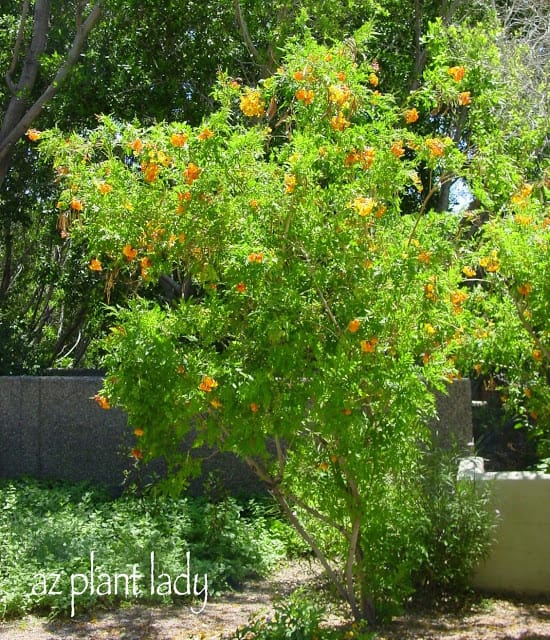
Orange Jubilee (Tecoma x Jubilee)
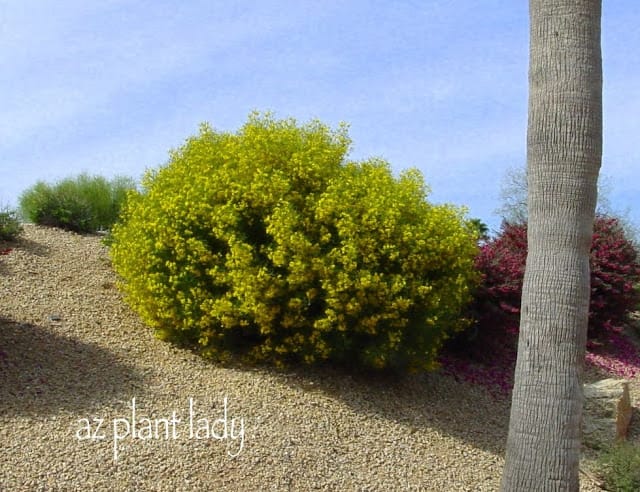
Threadleaf Cassia (Senna nemophila)
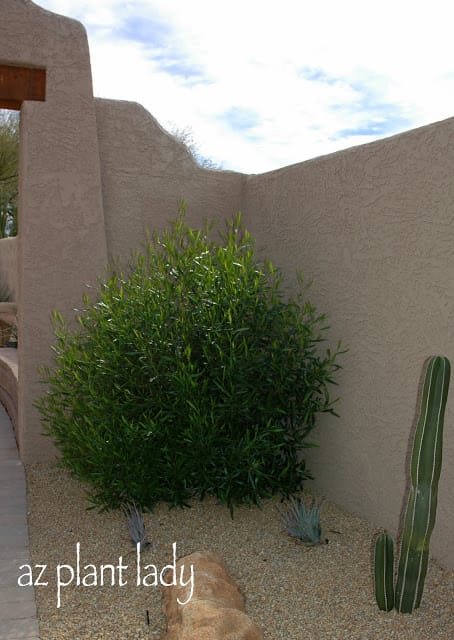
Hopbush (Dodonaea viscosa)
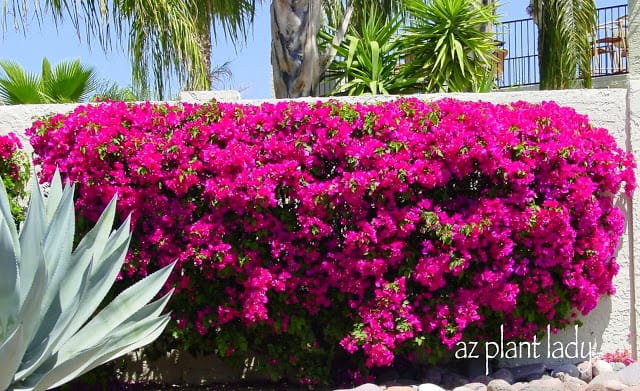
Bougainvillea
Other advantages in starting out using 1-gallon plants as opposed to 5-gallon or larger is that the smaller the initial size of the plant, the easier it is for them to be transplanted. Not just for the gardener, but it is also easier for the plant as well. Larger plants can have a more difficult time dealing with transplant shock.
I have been making some changes in my own garden and have been on the look out for shrubs in a 1-gallon size. I planted a Chaparral Sage (Salvia clevelandii) last month from a 1-gallon container.
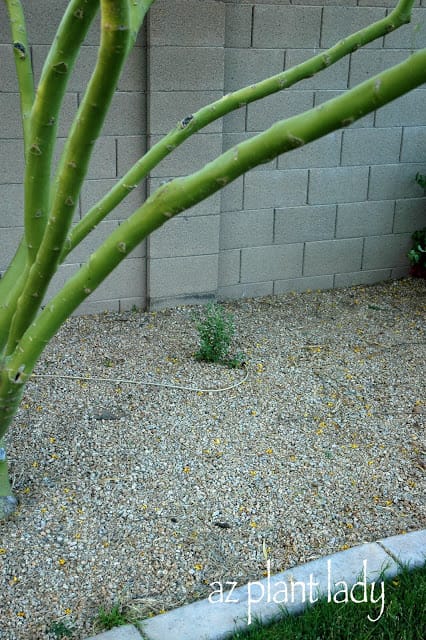
I admit, that it is quite small. But, it won’t stay this way for long. Soon, it will soon reach the size of this 3 year old Chaparral Sage that I planted in a commercial landscape….
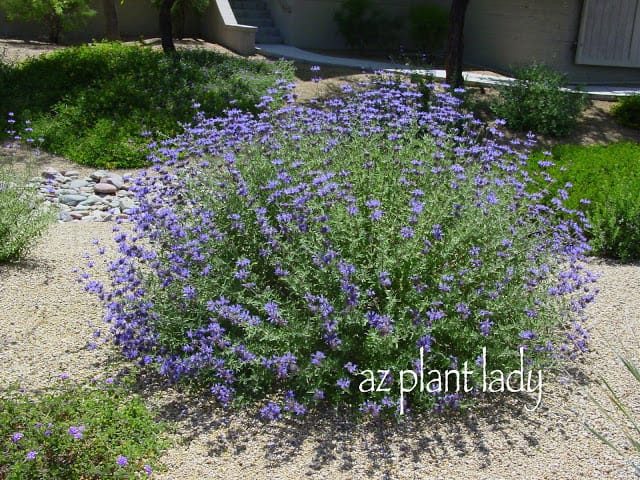
While you are waiting for your small shrubs to grow large, you can fill in the empty spaces with annuals that you can later pull out once your shrubs start to grow.
Another new addition to my garden is a new Red Bird-of-Paradise (Caesalpinia pulcherrima). The nurseries are starting to stock them right now and it is easy to find them in 5-gallon sizes. I had to look a little more carefully before I found the 1-gallon size.
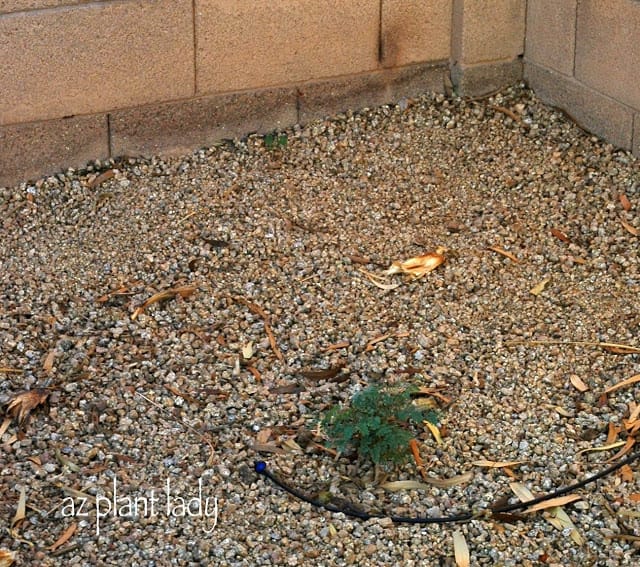
Okay I admit that I almost have to put on my reading glasses to be able to see this tiny shrub. But it grows so quickly.
In just 2 – 3 years, it will look like this….
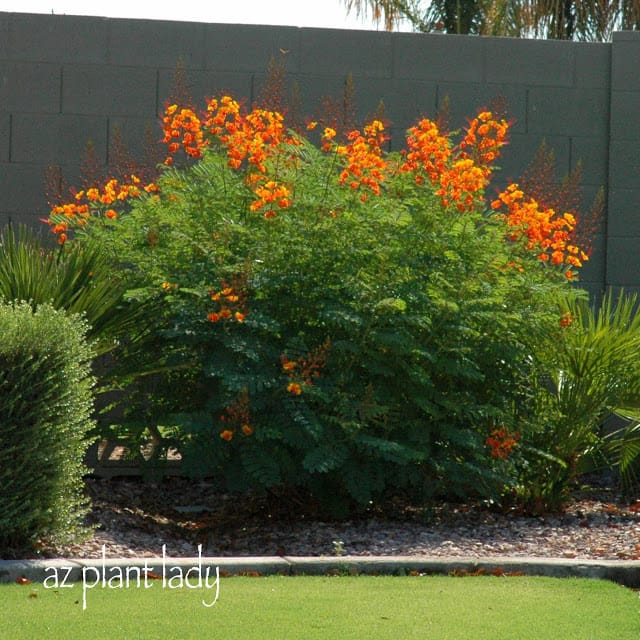
Not too bad for $4, is it?
Visions of Pink – One Pretty, One Amusing and the Other Unique


